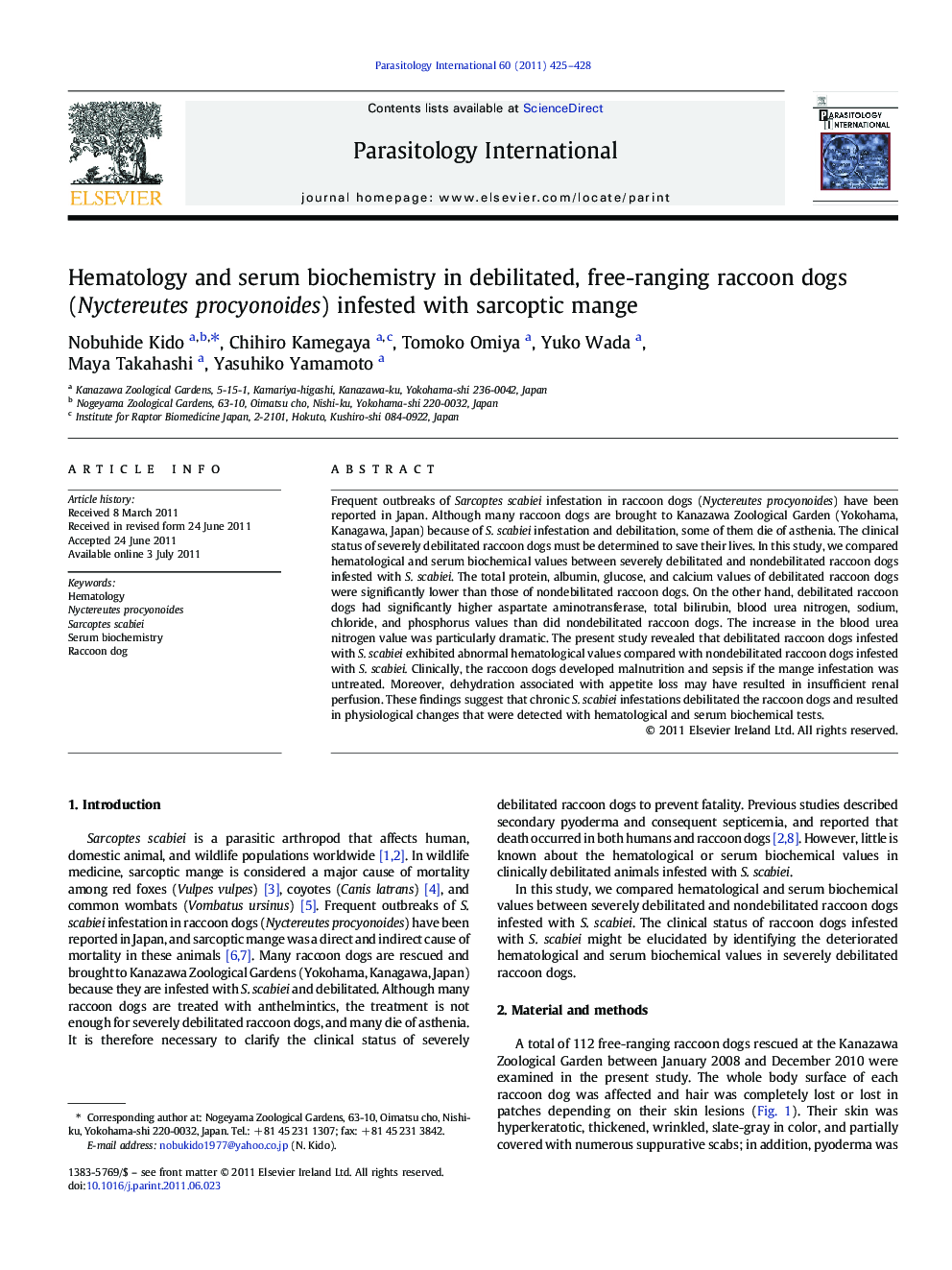| Article ID | Journal | Published Year | Pages | File Type |
|---|---|---|---|---|
| 3417963 | Parasitology International | 2011 | 4 Pages |
Frequent outbreaks of Sarcoptes scabiei infestation in raccoon dogs (Nyctereutes procyonoides) have been reported in Japan. Although many raccoon dogs are brought to Kanazawa Zoological Garden (Yokohama, Kanagawa, Japan) because of S. scabiei infestation and debilitation, some of them die of asthenia. The clinical status of severely debilitated raccoon dogs must be determined to save their lives. In this study, we compared hematological and serum biochemical values between severely debilitated and nondebilitated raccoon dogs infested with S. scabiei. The total protein, albumin, glucose, and calcium values of debilitated raccoon dogs were significantly lower than those of nondebilitated raccoon dogs. On the other hand, debilitated raccoon dogs had significantly higher aspartate aminotransferase, total bilirubin, blood urea nitrogen, sodium, chloride, and phosphorus values than did nondebilitated raccoon dogs. The increase in the blood urea nitrogen value was particularly dramatic. The present study revealed that debilitated raccoon dogs infested with S. scabiei exhibited abnormal hematological values compared with nondebilitated raccoon dogs infested with S. scabiei. Clinically, the raccoon dogs developed malnutrition and sepsis if the mange infestation was untreated. Moreover, dehydration associated with appetite loss may have resulted in insufficient renal perfusion. These findings suggest that chronic S. scabiei infestations debilitated the raccoon dogs and resulted in physiological changes that were detected with hematological and serum biochemical tests.
Graphical abstractFigure optionsDownload full-size imageDownload as PowerPoint slideHighlights► Serum biochemical values were affected in debilitated raccoon dogs infested with S. scabiei. ► Raccoon dogs developed malnutrition and sepsis if the mange infection was untreated. ► Dehydration associated with the appetite loss might result in the insufficient renal perfusion. ► The increased BUN suggests the possibility of renal failure because AGN is associated with sepsis.
